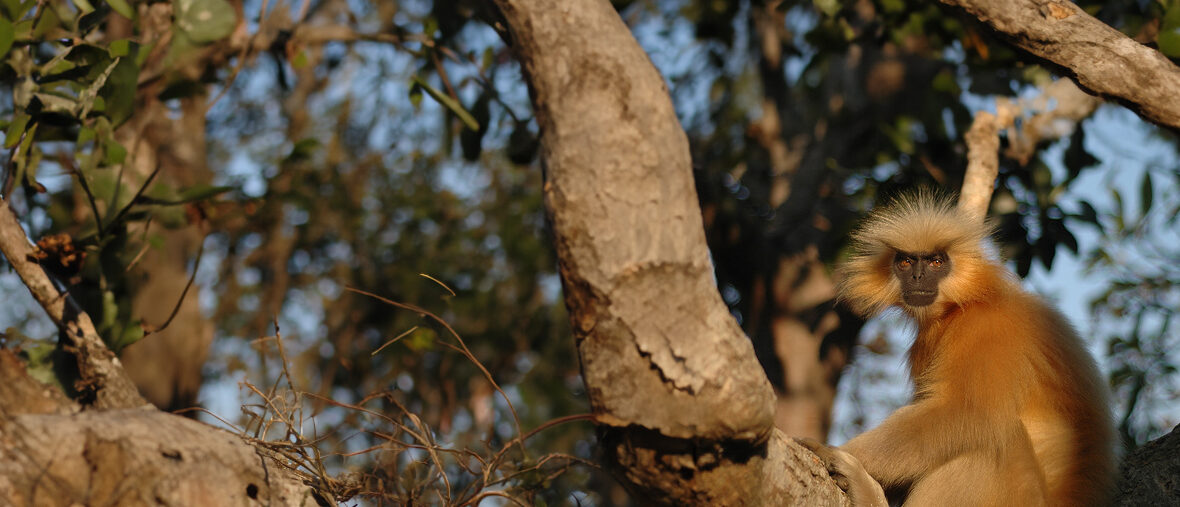
The Gee’s golden langur, aka golden langur, hails only from Bhutan and India. They prefer moist tropical forest habitats. Due to the threats of habitat loss and destruction at the hands of residential & commercial developments, mining, quarrying, deforestation at the hands of the logging industry, and agriculture; habitat division at the hands of roads and railroads, which also results in vehicle strike – being hit by vehicles; and human intrusion, these primates are listed as Endangered by the IUCN. Their numbers are also decreasing.
First the Stats…
Scientific name: Trachypithecus geei
Weight: Up to 24 lbs.
Length: Up to 37 inches, plus up to a 19.69 inch tail
Lifespan: Up to 15 years
Now on to the Facts!
1.) As of November, 2015 there were only 2,500 wild individuals remaining. There are now likely far less.
2.) These primates were first described by naturalist Edward Pritchard Gee in circa 1950s.
3.) They are arboreal (live in trees) and seldom travel to the ground.
4.) Ripened and unripened fruit, new growth and old growth leaves, buds, flowers, and seeds are all on the menu for these herbivores (eat plant matter).
5.) Troops are comprised of up to 8 individuals, with a ratio of 1 male per several females. However, troops of up to 50 have been encountered.
But wait, there’s more on the Gee’s golden langur!
6.) Like other primates, they are diurnal (active during the day).
7.) A group of primates is called a barrel, cartload, tribe, troop, or wilderness.
Did you know…?
Gee’s golden langurs can jump up to 40 feet from branch to branch, and up to 30 feet to the ground!
8.) Just like all primates, social grooming is practiced and used to strengthen bonds.
9.) Females undergo up to a 6 month gestation (pregnancy) that yields a single infant.
10.) Alloparenting is practiced too. This is where other females in the troop will all participate in rearing the infants.
But wait, there’s still more on the Gee’s golden langur!
11.) Leopards and Asiatic wild dogs both prey on these langurs, when they get the chance.
12.) These primates are notoriously difficult to study in the wild, as they are very fearful of humans, and rightfully so.
Now a Short Gee’s Golden Langur Video!
Be sure to share & comment below! Also, check out the Critter Science YouTube channel. Videos added regularly!
Want to suggest a critter for me to write about? Let me know here.
Some source material acquired from: Wikipedia & IUCN
Photo credit: Amartyabag



